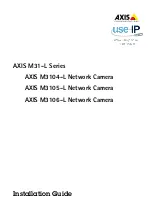
30 Router Card (WS-X3011) Configuration Note
Access the Router Card Command-Line Interface
Step 4
Configure the IP address and subnet mask for the LAN interface:
Router (config)# interface
type port_number
Router (config-if)# ip address
ipaddress subnetmask
Step 5
Configure the IP address and subnet mask for the BRI interface:
Router (config-if)# interface bri
port_number
Router (config-if)# ip address
ipaddress subnetmask
Step 6
If you are using an ISDN switch type (such as Basic NI1 or DMS-100) that requires a
service profile identifier (SPID), enter the SPID and optional local directory number
(LDN). The SPID and LDN are assigned by the ISDN service provider.
The SPID is a number that identifies the service to which you have subscribed. A SPID
is not required for AT&T 5ESS service configured for a point-to-point connection.
The LDN is an optional seven-digit phone number for the channel.
Router (config-if)# isdn spid1
SPID_no [LDN]
Router (config-if)# isdn spid2
SPID_no [LDN]
Step 7
Configure the router for PPP encapsulation and CHAP authentication:
Router (config-if)# encapsulation ppp
Router (config-if)# ppp authentication chap
Step 8
Enter the load-threshold or ppp multilink command to set up a second B channel.
For bandwidth on demand, enter the load-threshold command to set the ISDN load
threshold. The load threshold determines the percentage of network load at which the
second ISDN B channel is activated. The value ranges from 1 to 255 (100 percent). In the
following example, the value of 128 means that when the first B channel reaches
50 percent of its bandwidth capacity (128 equals 50 percent of 255), the second B channel
will activate to assist with the bandwidth load:
Router (config-if)# dialer load-threshold 128
Alternatively, you can use Multilink PPP to activate a second ISDN line. For Multilink
PPP to work, the router must be running Cisco IOS Release 11.0(3) or a later release, and
both the current router and target router must support Multilink PPP:
Router (config-if)# ppp multilink
Step 9
Enter the dialer map command to provide the information necessary to successfully
route packets to the target router. Do not use periods or hyphens when entering the
number to dial:
Router (config-if)# dialer map
protocol targetBRIport_ipaddress name
targetrouter_number
Step 10
Enter the dialer-group command to specify the number of the group permitted to access
the router:
Router (config-if)# dialer-group
groupnumber
Step 11
Enter the exit command to exit interface configuration mode.
Step 12
Enter the dialer list command to specify the groups and protocols permitted to access the
router:
Router (config)# dialer-list
groupnumber protocol protocol_type permit
















































